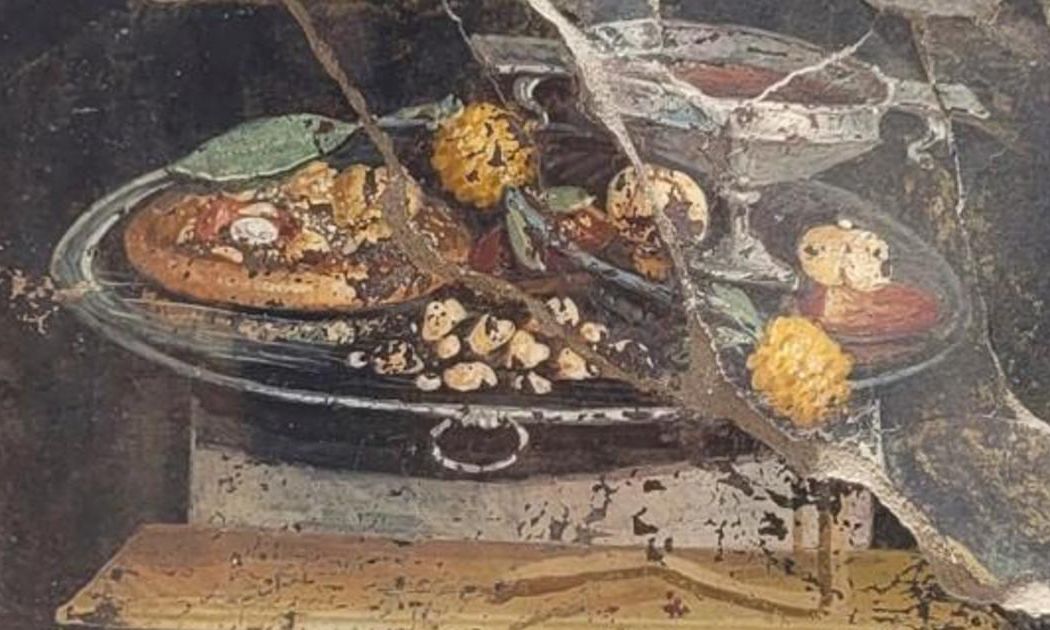The image is believed to be a pizza predecessor; a focaccia-style bread covered with fruit such as a pomegranate and dates, and a type of pesto
Courtesy Archaeological Park of Pompeii
A fresco painting discovered at Pompeii shows a lavish meal with a pizza-like bread at its centre, which archaeologists say could be a forerunner of Italy’s iconic dish. The food item, shown alongside a goblet of wine and a pineapple-esque fruit, lacks classic pizza ingredients however such as tomato and mozzarella.
The 2,000-year-old fresco was discovered during excavations in the Regio IX area of Pompeii’s archaeological park close to Naples, the home of the famous margherita pizza, which is believed to have been invented in the 1800s. “The image brings to mind a pizza [especially] since we are near Naples. Obviously it’s not a pizza but perhaps it could have been a distant ancestor of this food,” says Gabriel Zuchtriegel, the director of Pompeii archaeological park, in an online film.
The image is believed to be a focaccia-style bread covered with fruit such as a pomegranate and dates, and a type of pesto (moretum in Latin). Zuchtriegel says that the fresco shows “a flatbread offering with seasoning on it, some spices, some kind of condiment… with perhaps some walnuts and a [yellow] strawberry garland.”
He adds in a statement: “We find in this fresco some themes of the Hellenistic tradition, later elaborated by authors of the Roman-imperial era such as Virgil, Martial and Philostratus. I am thinking of the contrast between a frugal and simple meal, which refers to a sphere between the bucolic and the sacred, on the one hand, and the luxury of silver trays and the refinement of artistic and literary representations on the other.”
Pompeii was engulfed by volcanic ash in 79AD spewing from Mount Vesuvius. Excavations in Regio IX began earlier this year when the skeletons of two men thought to be in their mid 50s were discovered in a cluster of homes known as Insula dei Casti Amanti. The food fresco was discovered in the atrium of a house next to a bakery, which was partly excavated between 1888 and 1891 and where digging resumed in January, according to an Italian culture ministry statement.

